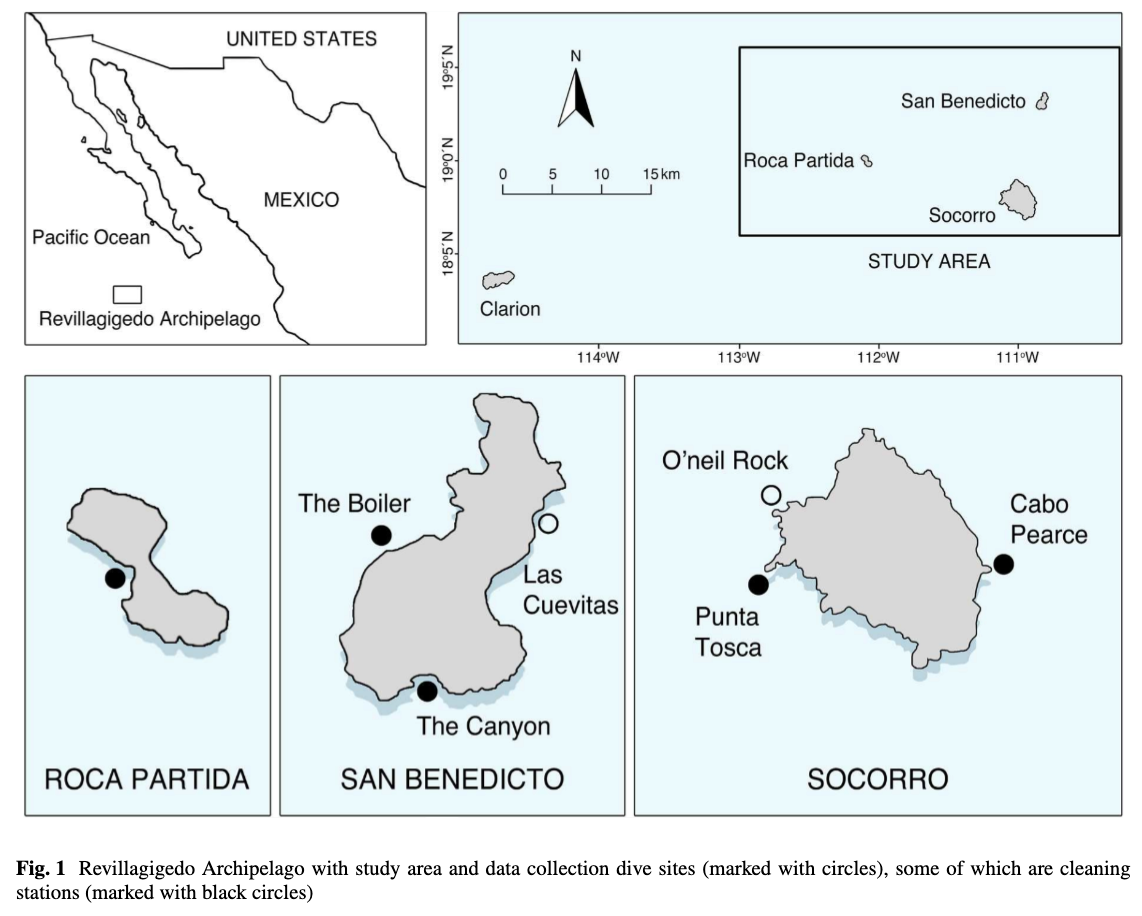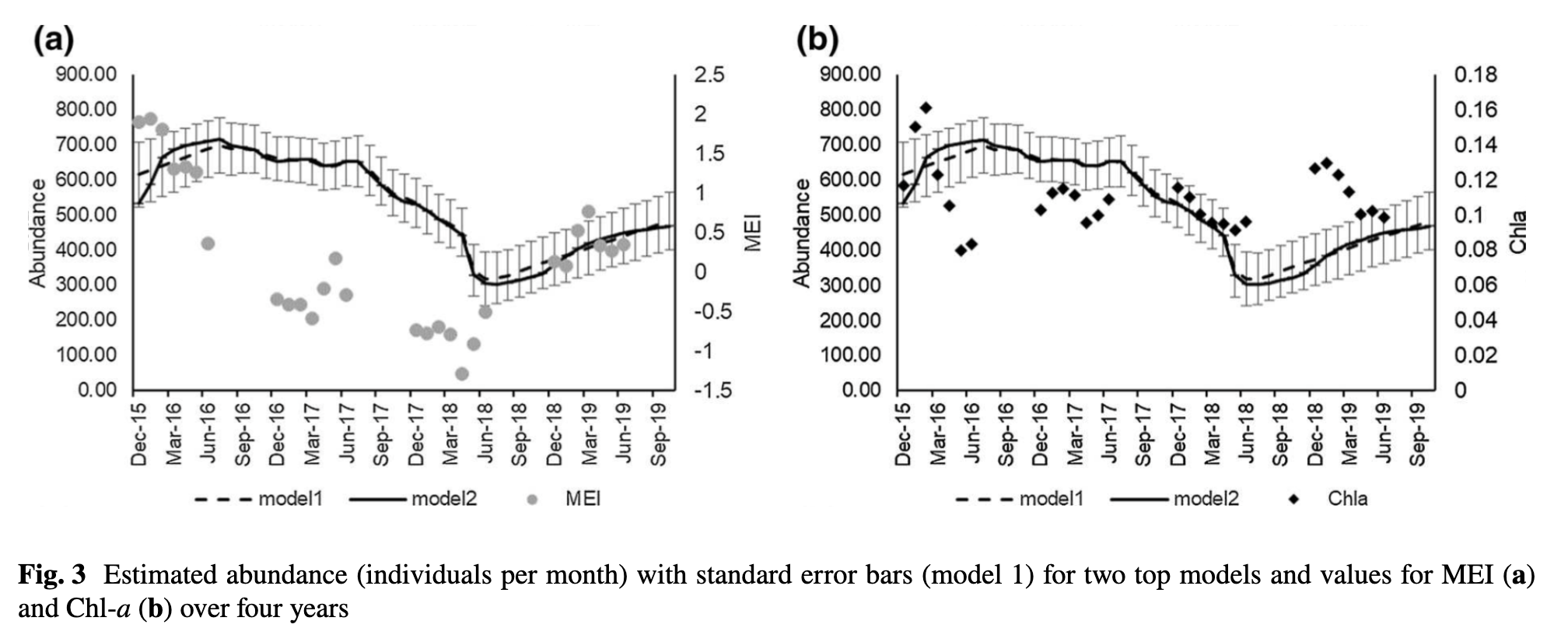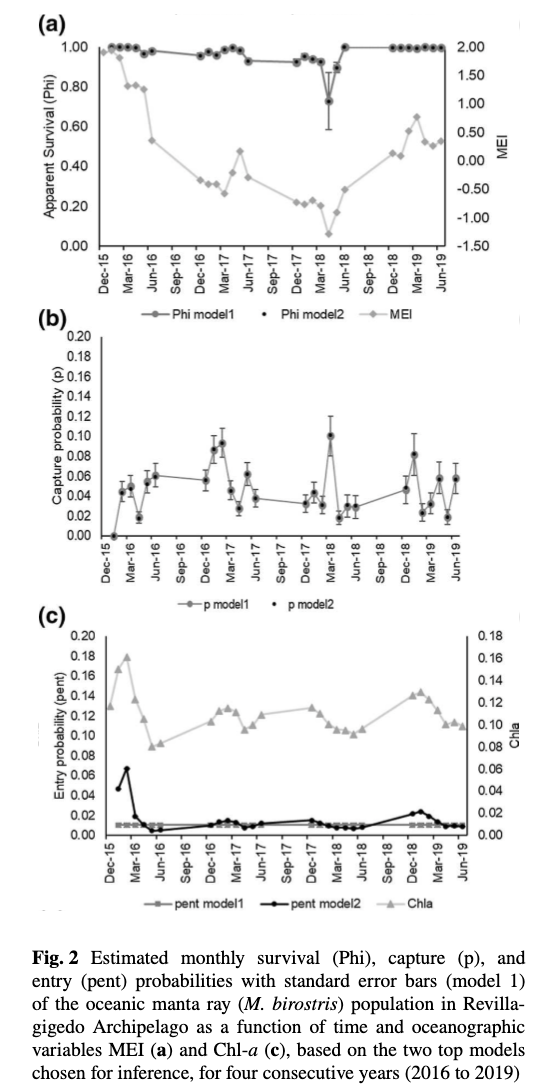The influence of El Niño Southern Oscillation on the population dynamics of oceanic manta rays in the Mexican Pacific
November 2022
Madalena Cabral, Joshua Stewart, Tiago A. Marques, James T Ketchum, Arturo Ayala-Bocos, Edgar Mauricio, Hoyos Padilla & Héctor Reyes-Bonill
Keywords: Citizen science • El Niño Southern Oscillation (ENSO) • Mark-recapture • Mobulid rays • Photo-identification • Revillagigedo National Park


Summary: Cabral et al. used photo identification data to describe baseline demographic characteristics for oceanic manta rays in the aggregation site of The Revillagigedo National Park (RNP), Mexico, as well as evaluated the influence of environmental factors on the population dynamics. Using mark-recapture method to estimate monthly abundance and provide the first superpopulation size estimate of 1172 (±90), their analysis suggested a significant relationship between the Multivariate ENSO Index (MEI combines both oceanic and atmospheric variables in a single index and provides a more comprehensive description of the El Niño-Southern Oscillation (ENSO) phenomenon) and monthly survival probabilities, and chlorophyll-a as a driver of recruitment in surveyed dive sites. Their findings provide a baseline to support effective conservation and management plans for this endangered species in the Mexican Pacific.
Abstract
“Oceanic manta rays Mobula birostris are declining globally due to fisheries. Past work has shown that movements and distributions of oceanic manta ray populations are sensitive to climatic fluctuations such as the El Niño Southern Oscillation. The Revillagigedo National Park (RNP), Mexico, is a well-known aggregation site for oceanic manta rays. However, published baseline data on population structure and dynamics, and the influence of oceanographic variables on the abundance of oceanic manta rays in the region are lacking. We used 2015–2019 photo-identification data to describe baseline demographic characteristics of this population and to evaluate the influence of environmental factors on population dynamics. A significant sex bias was found with a female:male ratio of 1.4:1. Mark-recapture (MR) was used to estimate monthly abundance and provided the first superpopulation size estimate of 1172 (± 90), representing all individuals using the RNP during the survey period. The MR analysis suggests a significant relationship between the multivariate ENSO index and monthly survival probabilities, and chlorophyll-a as a driver of recruitment in surveyed dive sites. These findings provide a baseline to support effective conservation and management plans for this endangered species in the Mexican Pacific.”
Author Affiliations
Universidad Autónoma de Baja California Sur
The Manta Trust
Marine Mammal Institute, Department of Fisheries, Wildlife and Conservation Sciences, Hatfield Marine Science Center, Oregon State University
Centre for Research into Ecological and Environmental Modelling
Centro de Estatística e Aplicações, Departamento de Biologia Animal
Pelagios Kakunjá A.C.
Centro de Investigaciones Biológicas Noroeste (CIBNOR)
MigraMar
Ecosistemas y Conservación
Fins Attached
Funded by
CONACYT Mexico (National Council for Science and Technology)

